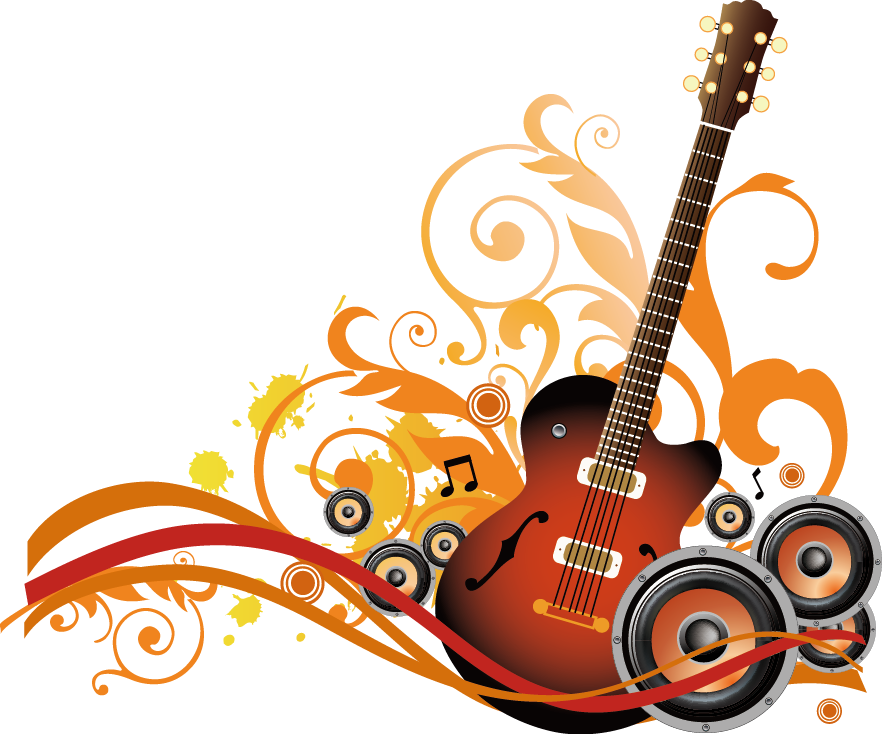Biography
Ginastera was born in Buenos Aires to a Catalan father and an Italian mother. He preferred to pronounce his surname in its Catalan pronunciation, with a soft «G» (i.e., JEE’-nah-STEH-rah rather than the Castilian Spanish KHEE’-nah-STEH-rah).
He studied at the conservatory in Buenos Aires, graduating in 1938. In the 1940s, Alberto Ginastera achieved international prominence after the successes of his ballet scores, Panambí and Estancia, which employed folkloric and nationalist influences of his native Argentina. In the 1950s he began experimenting with the idea of juxtaposing folkloric elements with serial techniques. His popular work for chamber orchestra, Variaciones concertantes, was composed in 1953 and won him even greater attention.
He was awarded a Guggenheim Fellowship in 1942 to study in the United States from 1945 to 1947 where he studied with Aaron Copland at Tanglewood and later returned to Buenos Aires and co-founded the ‘League of Composers’. In addition, he was awarded honorary doctorates from Yale University in 1968 and Temple University in 1975, and was the recipient of the UNESCO International Music Council music prize in 1981.
In the late 1950s and 1960s his music was presented in premiere performances by the top orchestras in the United States, including his first Piano Concerto (in Washington, DC), his Violin Concerto under with the New York Philharmonic under Leonard Bernstein, his Harp Concerto with the Philadelphia Orchestra and Eugene Ormandy conducting, and his opera, Don Rodrigo at the New York City Opera. In 1967 his second opera Bomarzo was premiered in Washington, DC but the subsequent Buenos Aires production was banned for political reasons and not staged in his native Argentina until 1972.
His late works include his opera Beatrix Cenci (which was presented as part of the Kennedy Center Inaugural concerts in 1971,) Glosses for orchestra, Piano Concerto No. 2 and two cello concertos in which the fusing of native Argentine musical elements with European classical tradition is accomplished to great effect.
Ginastera married cellist Aurora Natola in 1971 and left Argentina to take up residence in Geneva. He moved back to the US in 1968 and from 1970 lived in Europe. He died in Geneva.
Разнообразие выбора
Аргентинский танец страсти наполнен игривостью, чувственностью и быстрым ритмическим музыкальным сопровождением. Основной сюжет исполнения включает парные танцы. И в них происходит тесное соприкосновение исполнителей. Танец смелых и уверенных в себе людей.
Танец аргентинское танго имеет особенное историческое становление. Рассказывает историю трагической любви в страстном мотиве. Имеет постановочный характер, так как эмоции выражаются довольно ярко, а движения выполняются четко. Изначально это было обычное уличное представление.
В настоящее время существует в двух представлениях:
- Уличное шоу.
- Бальное преображение.
В первом варианте есть возможность провести импровизацию в большом количестве. Во втором случае, имеет определенные каноны и правила. Танго входит в пятерку танцев латиноамериканских программ бального соревновательного представления. У дам короткие платья, а у джентльменов удобные костюмы. Это обеспечивает свободу движений.
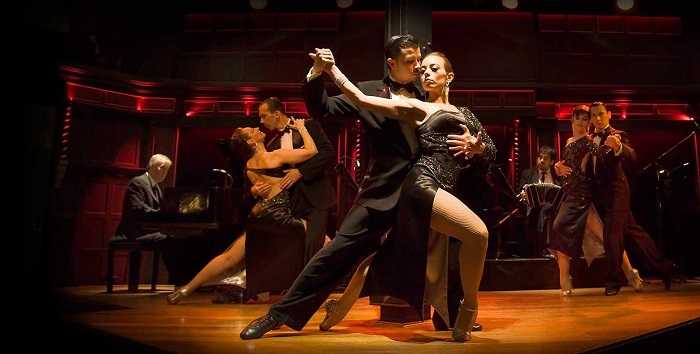
Что бы исполнять этот страстный танец, нужно иметь выносливость, мощную физическую подготовительную систему. Так как элементами танца являются широкий шаг и глубокий прогиб. Без тренировок такие трюки невозможно выполнить.
Другое название танец аргентинских пастухов, звучит как гаучо, в честь народности, от которой зародилось направление. Это разновидность аргентинских «ковбоев», и этот нрав, любовь к свободе прослеживается и в танце. В танцы аргентинских гаучо, вкладывается все мужество и ловкость гордого народа в повседневной жизни.
Ансамбль Моисеева аргентинский танец гаучо вывел на мировой уровень. И считается сложным шоу. Молодые люди ярко выполняют все движения. И, кажется, что все дается легко и просто. Но на самом деле, костюмы аргентинских пастухов, очень неудобная одежда, а шпоры сапог тяжелые. В таком наряде сложно передвигаться, а, тем более что бы выполнять сложные танцевальные па.
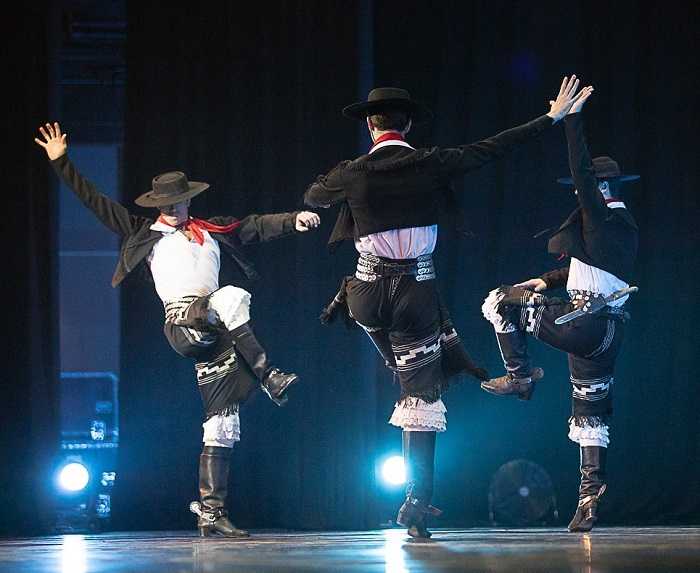
Еще одной разновидностью творчества данной народности является маламбо аргентинский танец, исполняет его мужское население. Является своеобразным исполнением фламенко. Требует от исполнителей:
- Виртуозные технологические аспекты.
- Чувствовать ритмы.
- Достигается невероятным накалом эмоций.
Основывается на ритмичном представлении с музыкальным сопровождением без вокального дополнения. Большой вклад в развитие культуры своего народа внес Альберто Хинастера аргентинские танцы под его руководством, обрели новую силу и яркость. Разнообразие выбора танцевальных номеров привлекает много внимания и интереса в творческих кругах.
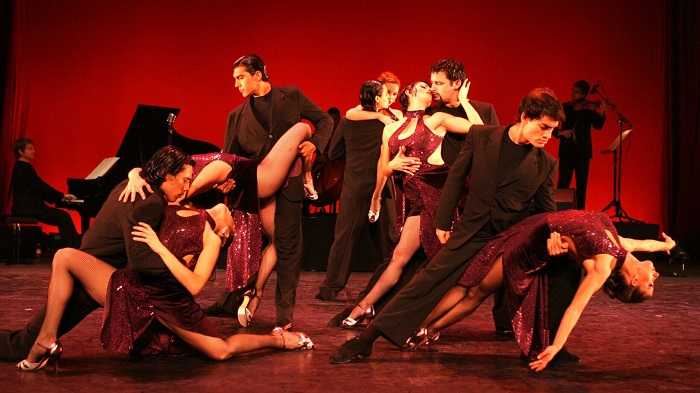
Discography
- Bomarzo, The Opera Society of Washington, Julius Rudel, conductor; 1967 recording[] re-released on Sony Classical in 2016.[]
- Cantata para América Mágica, Raquel Adonaylo, soprano; Los Angeles Percussion Ensemble, William Kraft, conductor. With: Carlos Chávez, Toccata for Percussion, Henri Temianka, conductor. LP recording, analog, 33⅓ rpm, stereo, 12 in. Columbia Masterworks MS 6447. New York: Columbia Records, 1963.
- Cantata para America Magica, McGill Percussion Ensemble, P. Béluse, director, Elise Bédard, soprano, McGill Records CD, 1997.
- Complete works for piano, Andrzej Pikul (piano), Dux Recording Producers, 2007.
- Quartet No. 1, Paganini Quartet, Decca Gold Label.
- Art Songs of Latin-America, Patricia Caicedo, soprano & Pau Casan, piano – Albert Moraleda Records, Barcelona, 2001 – Cinco canciones populares argentinas by Ginastera & Canción al árbol del olvido
- 2007 – Flores Argentinas: Canciones de Ginastera y Guastavino / Inca Rose Duo: Annelise Skovmand, voice; Pablo González Jazey, guitar. Cleo Productions, Cleo Prod 1002. Arrangements by González Jazey for voice and guitar of: Cinco canciones populares argentinas Op. 10 and Dos canciones Op. 3.
- Arrangement of Piano Concerto No. 1; fourth movement; as «Toccata», Emerson, Lake & Palmer, Brain Salad Surgery, 1973.
- Nissman Plays Ginastera: The Three Piano Concertos. Barbara Nissman, piano; Kenneth Kiesler, conductor; University of Michigan Symphony Orchestra. (CD) Pierian 0048 (2012)
- Complete piano solo and piano/chamber works, Barbara Nissman (piano) with Aurora Natola-Ginastera (cello), Ruben Gonzales (violin) and the Laurentian String Quartet. Three Oranges Recordings (3OR-01)
- Popol Vuh – The Mayan Creation, Estancia, Panambi, Suite de Danzas Criollas (world premiere of orchestral version), Ollantay. Gisele Ben-Dor, conductor. London Symphony Orchestra, Jerusalem Symphony Orchestra, BBC National Orchestra of Wales. Naxos, 2010.
- Panambi, Estancia (complete Ballets), Gisele Ben-Dor, conductor. Luis Gaeta, narrator/bass baritone. London Symphony Orchestra. Naxos, 1998&2006.
- Glosses on Themes of Pablo Casals, Variaciones concertantes. Gisele Ben-Dor, conductor. London Symphony Orchestra. Israel Chamber Orchestra. Naxos 1995&2010.
- John Antill: Corroboree ballet suite and Ginastera: Panambi ballet suite, London Symphony Orchestra, Sir Eugene Goossens, conductor, Everest stereo LP, SDBR 3003
- String Quartets – «Ginastera: String Quartets,» Cuarteto Latinoamericano, with Claudia Montiel, soprano
- Piano Concerto No. 1 and Piano Sonata No. 1, Hilde Somer, piano; Ernst Märzendorfer, conductor; Vienna Philharmonia Orchestra; Desto (D-402/DS-6402)
Творческий подход
Исполнять аргентинский народный танец необходимо с полной отдачей, раскрывая страсть души и истинные эмоции. Иначе танец теряет свою истинную ценность. Прочувствовать силу можно при просмотре аргентинские танцы видео, в них раскрываются мудрость народа, его природная сила и культурное наследие.
При выборе данных композиций танцевальный коллектив проявляет творческий подход. Сживаясь с ролью, продумывая костюмы, подбирая оформление и музыкальное сопровождение. Любовь и страсть ведет танцоров, завораживая гостей представления.
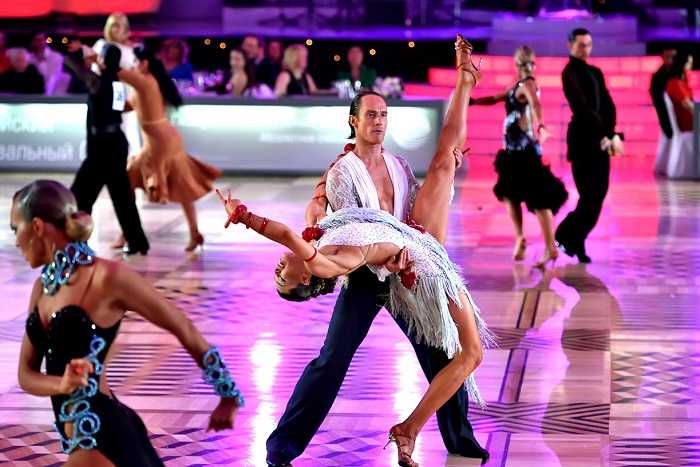
- Болгарский танец
- Белорусский танец
- Татарский танец
- Азербайджанские танцы
- Еврейский танец
Работает
Опера
- Дон Родриго, Соч. 31 (1963–64)
- Bomarzo, Соч. 34 (1966–67), запрещен в Аргентине до 1972 г.
- Беатрикс Ченчи, Соч. 38 (1971), по пьесе Ченчи (1819) Перси Биши Шелли
Оркестровый
- Обертура пара эль «Фаусто» криолло, Соч. 9 (1943)
- Ольянтай: 3 симфонические части, соч. 17 (1947)
- Концертные вариации, Соч. 23 (1953)
- Пампеана № 3, Соч. 24 (1954)
- Концерт для корда, Соч. 33 (1965)
- Estudios Sinfonicos, Соч. 35 (1967)
- Пополь Вух, Соч. 44 (1975–1983, оставлено незавершенным после смерти композитора)
- Блески sobre temes de Pau Casals для струнного оркестра, соч. 46 (1976)
- Блески sobre temes de Pau Casals для полного оркестра, соч. 48 (1976–77)
- Иубилум, соч. 51 (1979–80)
Concertante
- Арфа
- Пианино
- Концерт для фортепиано № 1, Соч. 28 (1961)
- Концерт для фортепиано с оркестром № 2, Соч. 39 (1972)
- Консьерто аргентинский (1935)
- Скрипка
- Виолончель
- Концерт для виолончели № 1, соч. 36 (1968)
- Концерт для виолончели № 2, соч. 50 (1980–81)
Пианино
- Danzas argentinas, Соч. 2 (1937)
- Tres piezas, Соч. 6 (1940)
- Маламбо, Соч. 7 (1940)
- «Pequena Danza» (из балета Эстансия, Соч.
 (1941)
(1941) - 12 Preludios americanos, Соч. 12 (1944)
- Люкс de danzas criollas, Соч. 15 (1946, ред. 1956)
- Rondó sobre temas infantiles argentinos, Соч. 19 (1947)
- Соната для фортепиано № 1, соч. 22 (1952)
- Переложение для органа токката Доменико Циполи (1970)
- Соната для фортепиано № 2, соч. 53 (1981)
- Соната для фортепиано № 3, соч. 54 (1982)
-
Danzas argentinas para los ninos (Неоконченный)
- Moderato: para Alex
- Paisaje: para Georgina
Орган
- Токката, Виллансико и Фуга, соч. 18 (1947)
- Variazioni e Toccata sopra Аврора Люцис Рутилат, Соч. 52 (1980)
- Вариант 1: Маэстосо
- Вариант 2: Tempo giusto
- Вариант 3: Impetuoso, l’istesso tempo
- Вариант 4: Вивациссимо
- Вариант 5: L’istesso tempo
- Вариант 6: L’istesso tempo
- Вариант 7: Серено
- Вариант 8: Estatico
- Вариация 9: Quasi allegretto
- Вариант 10: Пастораль
- Вариация 11: Andantino poetico
- Вариант 12: Ленто
- Токката — Финал: Тема
Вокал / хоровой
- 2 песни, для голоса и фортепиано, соч. 3 (1938)
- Кантос-дель-Тукуман, для голоса, флейты, арфы, ударных и скрипки, соч. 4 (1938)
- Псалом 150, для хора, соч. 5 (1938)
- 5 популярных блюд Аргентины, для голоса и фортепиано, соч. 10 (1943)
- Las horas de una estancia, для голоса и фортепиано, соч. 11 (1943)
- Lamentaciones de Jeremias Propheta, для хора, соч. 14 (1946)
- Cantata para América mágica, для драматического сопрано и ударного оркестра, соч. 27 (1960)
- Кантата Бомарцо, для солистов, рассказчика и камерного оркестра, соч. 32 (1964)
- Милена, для сопрано и оркестра, Op. 37 (1971)
- Серената, для баритона, виолончели, духового квинтета, ударных, арфы и контрабаса, соч. 42 (1973)
- Turbae ad Passionem Gregorianam, для солистов, хора, хора мальчиков и оркестра, соч. 43 (1975)
- Canción del beso robado, для голоса и фортепиано (19 ??)
Камерный / соло-инструментальный
- Дуэт, для флейты и гобоя, Op. 13 (1945)
- Пампеана № 1, для скрипки и фортепиано, соч. 16 (1947)
- Струнный квартет № 1, соч. 20 (1948)
- Пампеана № 2, для виолончели и фортепиано, соч. 21 (1950)
- Струнный квартет № 2, соч. 26 (1958 г., ред. 1968 г.)
- Фортепианный квинтет, соч. 29 (1963)
- Струнный квартет № 3, для сопрано и струнного квартета, соч. 40 (1973)
- Пуненья № 1, для флейты, соч. 41 (1973, оставлено незавершенным на момент смерти композитора)
- Пуненья № 2 («Hommage à Пол Захер «), для виолончели, соч. 45 (1976)
- Соната для гитары, Соч. 47 (1976, Rev.1981)
- Соната для виолончели и фортепиано, соч. 49 (1979)
Сочинения отозваны композитором (без номера опуса)
- Piezas Infantiles, для фортепиано (1934)
- Impresiones de la Puna, для флейты и струнного квартета (1934)
- Concierto argentino, для фортепиано с оркестром (1936)
- Эль-арриеро канта, для хора (1937)
- Сонатина, для арфы (1938)
- Симфония № 1 («Портенья») (1942)
- Симфония № 2 («Элегия») (1944)
Случайные / музыка из фильмов
- Дон Базилио Малькасадо (1940)
- Doña Clorinda la descontenta (1941)
- Маламбо (1942)
- Роза де Америка (1945)
- Las Antiguas semillas (1947)
- Nace la libertad (1949)
- Эль-Пуэнте (1950)
- Факундо, Эль-тигре-де-лос-Льянос (1952)
- Caballito criollo (1953)
- Su seguro servidor (1954)
- Los maridos de mamá (1956)
- Enigma de mujer (1956)
- Primavera de la vida (1958)
- Hay que bañar al nene (1958)
- Эль-лимит (1958)
- Мария дель Корасон (1960)
- La doncella prodigiosa (1961)
Biography
Julián Aguirre Conservatory of Music, founded by Ginastera in 1951
Ginastera was born in Buenos Aires to a Spanish father and an Italian mother. During his later years, he preferred to use the Catalan and Italian pronunciation of his surname – IPA: , with an initial soft ‘G’ like that of English ‘George’ – rather than with a Spanish ‘J’ sound (IPA: ).
Ginastera studied at the Williams Conservatory in Buenos Aires, graduating in 1938. As a young professor, he taught at the Liceo Militar General San Martín. After a visit to the United States in 1945–47, where he studied with Aaron Copland at Tanglewood, he returned to Buenos Aires. He held a number of teaching posts. Among his notable students were Ástor Piazzolla (who studied with him in 1941), Alcides Lanza, Jorge Antunes, Waldo de los Ríos, Jacqueline Nova and Rafael Aponte-Ledée. See: .
In 1968 Ginastera moved back to the United States, and in 1970 to Europe. He died in Geneva, Switzerland, at the age of 67 and was buried in the Cimetière des Rois there.
Music and Style
Alberto Ginastera grouped his music into three periods: «Objective Nationalism» (1934–1948), «Subjective Nationalism» (1948–1958), and «Neo-Expressionism» (1958–1983). Among other distinguishing features, these periods vary in their use of traditional Argentine musical elements. His Objective Nationalistic works often integrate Argentine folk themes in a straightforward fashion, while works in the later periods incorporated traditional elements in increasingly abstracted forms. In Ginastera’s Sonata for guitar, op. 47, an example of his nationalistic period, he featured folk guitar traditions and syncopated folk dance rhythms with a development of the musical themes through the «vidala,» «baguala,» and «andino cantos de caja.»
He later used his three piano sonatas to bring in a sense of historical nationalism in which he featured Iberian musical traditions in the first sonata, introduced the American Indian stylism in the second sonata, and united the two ethnic groups into a beautiful blending of scalar musical symmetry. In his six Argentinian Dances, he features the «gato,» «bailecito,» «huella,» «malambo,» «milonga», and the «tango.» His last period which is regarded as neo-expressionism brings Ginastera out of a classical tradition towards an abstract musicality without the use of folk music or symbolic nationalism.
The progressive rock group, ‘Emerson, Lake & Palmer’ brought Ginastera’s attention outside of modern classical music circles when they adapted the fourth movement of his first piano concerto and recorded it on their popular album Brain Salad Surgery under the title «Toccata.» They recorded the piece not only with Ginastera’s permission, but with his endorsement. In 1973, when they were recording the album, Keith Emerson met with Ginastera at his home in Switzerland and played a recording of his arrangement for him. Ginastera is reported to have said, «Diabolical!» Keith Emerson—misunderstanding Ginastera’s meaning—(he spoke no English and meant that their interpretation was frightening, which was his intent when he wrote it)—was so disappointed that he was prepared to scrap the piece when Ginastera’s wife intervened saying that he approved. Ginastera later said, «You have captured the essence of my music.» Emerson would later go on to release an adaptation of Ginastera’s Suite de Danzas Criollas entitled «Creole Dance.» «Toccata» also gained fame as the theme to the New England cult TV show Creature Double Feature.
Works
Opera
- Don Rodrigo, Op. 31 (1963–64)
- Bomarzo, Op. 34 (1966–67), banned in Argentina until 1972
- Beatrix Cenci, Op. 38 (1971), based on the play The Cenci (1819) by Percy Bysshe Shelley
Orchestral
- Obertura para el «Fausto» criollo, Op. 9 (1943)
- Ollantay: 3 Symphonic Movements, Op. 17 (1947)
- Variaciones concertantes, Op. 23 (1953)
- Pampeana No. 3, Op. 24 (1954)
- Concerto per corde, Op. 33 (1965)
- Estudios Sinfonicos, Op. 35 (1967)
- Popol Vuh, Op. 44 (1975–1983, left incomplete at the composer’s death)
- Glosses sobre temes de Pau Casals for string orchestra, Op. 46 (1976)
- Glosses sobre temes de Pau Casals for full orchestra, Op. 48 (1976–77)
- Iubilum, Op. 51 (1979–80)
Concerti
- Harp
- Piano
- Piano Concerto No. 1, Op. 28 (1961)
- Piano Concerto No. 2, Op. 39 (1972)
- Violin
- Cello
- Cello Concerto No. 1, Op. 36 (1968)
- Cello Concerto No. 2, Op. 50 (1980–81)
Piano
- Danzas argentinas, Op. 2 (1937)
- Tres piezas, Op. 6 (1940)
- Malambo, Op. 7 ( 1940)
- «Pequena Danza» (from the ballet Estancia, Op.
 (1941)
(1941) - 12 Preludios americanos, Op. 12 (1944)
- Suite de danzas criollas, Op. 15 (1946, rev. 1956)
- Rondó sobre temas infantiles argentinos, Op. 19 (1947)
- Piano Sonata No. 1, Op. 22 (1952)
- Arrangement of an Organ Toccata by Domenico Zipoli (1970)
- Piano Sonata No. 2, Op. 53 (1981)
- Piano Sonata No. 3, Op. 54 (1982)
-
Danzas argentinas para los ninos (Unfinished)
- Moderato: para Alex
- Paisaje: para Georgina
Organ
- Toccata, Villancico y Fuga, Op. 18 (1947)
- Variazioni e Toccata sopra Aurora lucis rutilat, Op. 52 (1980), dedicated to W. Stuart Pope (president of Boosey & Hawkes), premiered by Marilyn Mason at the 1980 national convention of the AGO in Minneapolis.
Vocal/choral
- 2 Songs, for voice and piano, Op. 3 (1938)
- Cantos del Tucumán, for voice, flute, harp, percussion, and violin, Op. 4 (1938)
- Psalm 150, for mixed choir, children’s choir and orchestra, Op. 5 (1938)
- 5 canciones populares argentinas, for voice and piano, Op. 10 (1943)
- Las horas de una estancia, for voice and piano, Op. 11 (1943)
- Lamentaciones de Jeremias Propheta, for chorus, Op. 14 (1946)
- Cantata para América mágica, for dramatic soprano and percussion orchestra, Op. 27 (1960)
- Cantata Bomarzo, for soloists, narrator, and chamber orchestra, Op. 32 (1964)
- Milena, for soprano and orchestra, Op. 37 (1971)
- Serenata, for baritone, violoncello, wind quintet, percussion, harp, and double bass, Op. 42 (1973)
- Turbae ad passionem gregorianam, for soloists, chorus, boy’s chorus and orchestra, Op. 43 (1975)
- Canción del beso robado, for voice and piano (19??)
Chamber/solo instrumental
- Duo, for flute and oboe, Op. 13 (1945)
- Pampeana No. 1, for violin and piano, Op. 16 (1947)
- String Quartet No. 1, Op. 20 (1948)
- Pampeana No. 2, for violoncello and piano, Op. 21 (1950)
- String Quartet No. 2, Op. 26 (1958, Rev. 1968)
- Piano Quintet, Op. 29 (1963)
- String Quartet No. 3, for soprano and string quartet, Op. 40 (1973)
- Puneña No. 1, for flute, Op. 41 (1973, left incomplete at the time of the composer’s death)
- Puneña No. 2 («Hommage à Paul Sacher»), for violoncello, Op. 45 (1976)
- Sonata for guitar, Op. 47 (1976, Rev. 1981)
- Sonata for cello and piano, Op. 49 (1979)
- Fanfare for four trumpets, op. 51a (1980)
Works withdrawn by the composer (without opus number)
- Piezas Infantiles, for piano (1934)
- Impresiones de la Puna, for flute and string quartet (1934)
- Concierto argentino, for piano and orchestra (1936)
- El arriero canta, for chorus (1937)
- Sonatina, for harp (1938)
- Symphony No. 1 («Porteña») (1942)
- Symphony No. 2 («Elegíaca») (1944)
Incidental/film music
- Don Basilio malcasado (1940)
- Doña Clorinda la descontenta (1941)
- Malambo (1942)
- Rosa de América (1945)
- Las antiguas semillas (1947)
- Nace la libertad (1949)
- El puente (1950)
- Facundo, el tigre de los llanos (1952)
- Caballito criollo (1953)
- Su seguro servidor (1954)
- Los maridos de mamá (1956)
- Enigma de mujer (1956)
- Spring of Life (1957)
- Hay que bañar al nene (1958)
- El límite (1958)
- A María del corazón (1960)
- La doncella prodigiosa (1961)
References
- Deborah Schwartz-Kates, «Ginastera, Alberto (Evaristo)», The New Grove Dictionary of Music and Musicians, second edition, edited by Stanley Sadie and John Tyrrell (London: Macmillan Publishers, 2001); Evett, Robert. 1966. «The South American Way», New Republic 154, no. 12 (19 March): 35; Anon. «Obituary: Alberto Ginastera». The Musical Times 124, no. 1687, Music of the French Baroque (September 1983): 568; Aurelio de la Vega, «Trends of Present-Day Latin-American Music», Journal of Inter-American Studies 1, no. 1 (January 1959): 97–102, citation on p. 10; Norman Lebrecht, Companion to Twentieth-century Music (New York: Simon and Schuster, 1992): 134. Reprint New York: Da Capo Press. ISBN ; Levin Houston, «Kennedy Center Sees Beatrix Cenci«, The Free Lance-Star 87, no. 215 (13 September 1971); Suzanne Spicer Tiemstra, The Choral Music of Latin America: A Guide to Compositions and Research, Contributions in Afro-American & African Studies 36 (New York: Greenwood Press, 1992): 2. ISBN .
- Schwartz-Kates, Deborah (May 3, 2011). Alberto Ginastera: A Research and Information Guide. Taylor & Francis. ISBN – via Google Books.
- Schwartz-Kates, Deborah (January 1, 2002). «Alberto Ginastera, Argentine Cultural Construction, and the Gauchesco Tradition». The Musical Quarterly. 86 (2): 248–281. doi:10.1093/musqtl/gdg009.
- The Tenth Anniversary of the International Contemporary Organ Music Festival (Music Festival Program Notes). International Contemporary Organ Music Festival. July 25, 1980.
- «Details». Archived from the original on 2011-10-03. Retrieved 2010-10-23.
- ^ «Gisele Ben-Dor — Conductor». www.giseleben-dor.com. Archived from the original on 2018-09-28. Retrieved 2012-09-23.
Works
Concertante
- Piano Concerto No. 1, Op. 28
- Piano Concerto No. 2, Op. 39
- Violin Concerto
- Cello Concerto No. 1, Op. 36
- Cello Concerto No. 2, Op. 50
- Harp Concerto
Vocal/choral orchestral
- Cinco canciones populares argentinas (1943)
- Lamentaciones de Jeremias Propheta (1946)
- «Variaciones Concetante» (1953)
- Bomarzo (1964), a cantata described as «distinct from the opera» by the Concise Oxford Dictionary of Music
Chamber/instrumental
- Piano Quintet
- String Quartet No. 1
- String Quartet No. 2
- String Quartet No. 3
- Cello Sonata
- Piano Sonata No. 1, Op. 22
- Piano Sonata No. 2
- Piano Sonata No. 3
- Danzas Argentinas, for piano
- Guitar Sonata, Op. 47
- Pampeana No. 1, for violin and piano
- Pampeana No. 2, for cello and piano
- Pampeana No. 3, for piano
- Suite de Danzas Criollas, for piano
- 12 Preludes for solo piano
Music
Ginastera grouped his music into three periods: «Objective Nationalism» (1934–1948), «Subjective Nationalism» (1948–1958), and «Neo-Expressionism» (1958–1983). Among other distinguishing features, these periods vary in their use of traditional Argentine musical elements. His Objective Nationalistic works often integrate Argentine folk themes in a straightforward fashion, while works in the later periods incorporate traditional elements in increasingly abstracted forms.
Many of Ginastera’s works were inspired by the Gauchesco tradition. This tradition holds that the gaucho, or landless native horseman of the plains, is a symbol of Argentina.
His Cantata para América Mágica (1960), for dramatic soprano and 53 percussion instruments, was based on ancient pre-Columbian legends. Its U.S. West Coast premiere was performed by the Los Angeles Percussion Ensemble under Henri Temianka and William Kraft at UCLA in 1963.
Дискография
- Bomarzo, Вашингтонское оперное общество, дирижер Джулиус Рудель; Запись 1967 переиздан на Sony Classical в 2016 году.
- Cantata para América Mágica, Ракель Адонайло, сопрано; Ансамбль ударных инструментов Лос-Анджелеса, дирижер Уильям Крафт. С: Карлос Чавес, Токката для ударных, Анри Темянка, дирижер. Запись LP, аналоговая, 33⅓ об / мин, стерео, 12 дюймов. Columbia Masterworks MS 6447. Нью-Йорк: Columbia Records, 1963.
- Кантата для Америки Magica, Ансамбль ударных Макгилла, П. Белюз, режиссер, Элиз Бедар, сопрано, компакт-диск McGill Records, 1997.
- Полное собрание сочинений для фортепиано, Анджей Пикуль (фортепиано), Dux Recording Producers, 2007.
- Квартет № 1, Квартет Паганини, Decca Gold Label.
- Художественные песни Латинской Америки, Патрисия Кайседо, сопрано и Пау Казан, фортепиано — Альберт Мораледа Рекордс, Барселона, 2001 — Cinco canciones populares argentinas by Ginastera & Canción al árbol del olvido
- 2007 — Флорес Аргентинас: Canciones de Ginastera y Guastavino / Inca Rose Duo: Аннелиз Сковманд, голос; Пабло Гонсалес Джейзи, гитара. Cleo Productions, Cleo Prod 1002. Переложения Гонсалеса Джейзи для голоса и гитары: Cinco canciones populares argentinas Соч. 10 и Dos canciones Op. 3.
- Переложение для фортепианного концерта № 1; четвертая часть; как «Токката», Эмерсон, Лейк и Палмер, Хирургия салата для мозга, 1973.
- Ниссман играет Джинастера: Три фортепианных концерта. Барбара Ниссман, фортепиано; Кеннет Кислер, дирижер; Симфонический оркестр Мичиганского университета. (CD) Пиериан 0048 (2012)
- Пополь Вух — Творение майя, Estancia, Panambi, Suite de Danzas Criollas (мировая премьера оркестровой версии), Ollantay. Жизель Бен-Дор, дирижер. Лондонский симфонический оркестр, Иерусалимский симфонический оркестр, BBC Национальный оркестр Уэльса. Наксос, 2010.
- Панамби, Эстансия (все балеты), Жизель Бен-Дор, дирижер. Луис Гаэта, рассказчик / бас-баритон. Лондонский симфонический оркестр. Наксос, 1998&2006.
- Глоссы на темы Пабло Казальса, Концертные вариации. Жизель Бен-Дор, дирижер. Лондонский симфонический оркестр. Камерный оркестр Израиля. Наксос 1995&2010.
- Джон Антилл: Corroboree балетная сюита и Гинастера: Панамби балетная сюита, Лондонский симфонический оркестр, Сэр Юджин Гуссенс, дирижер, Everest стерео LP, SDBR 3003
- Струнные квартеты — «Ginastera: String Quartets», Cuarteto Latinoamericano, с Клаудией Монтьель, сопрано
- Концерт для фортепиано № 1 и Соната для фортепиано № 1, Хильде Сомер, фортепиано; Эрнст Мерцендорфер, дирижер; Венский филармонический оркестр; Десто (D-402 / DS-6402)
Credits
New World Encyclopedia writers and editors rewrote and completed the Wikipedia article
in accordance with New World Encyclopedia standards. This article abides by terms of the Creative Commons CC-by-sa 3.0 License (CC-by-sa), which may be used and disseminated with proper attribution. Credit is due under the terms of this license that can reference both the New World Encyclopedia contributors and the selfless volunteer contributors of the Wikimedia Foundation. To cite this article click here for a list of acceptable citing formats.The history of earlier contributions by wikipedians is accessible to researchers here:
Alberto Ginastera history
The history of this article since it was imported to New World Encyclopedia:
History of «Alberto Ginastera»
Note: Some restrictions may apply to use of individual images which are separately licensed.
